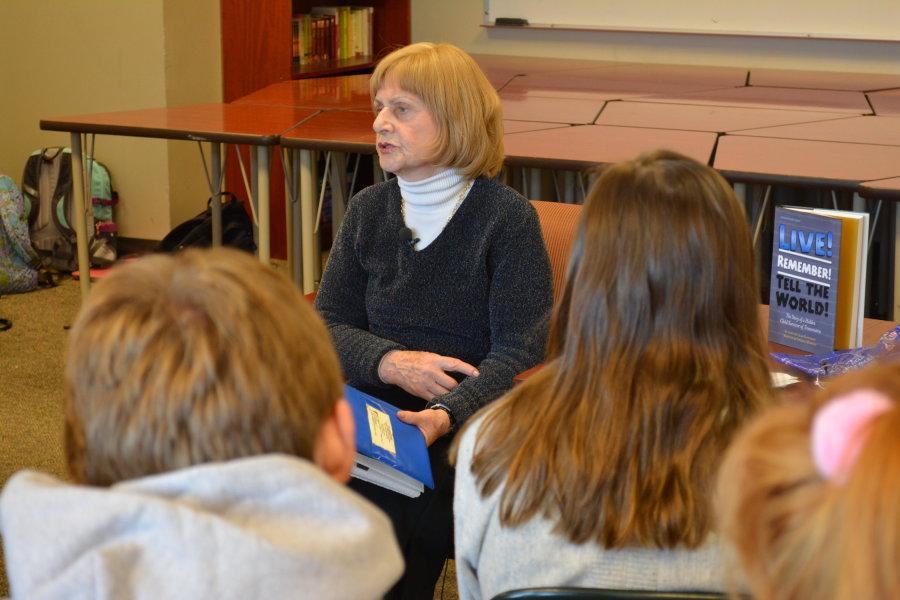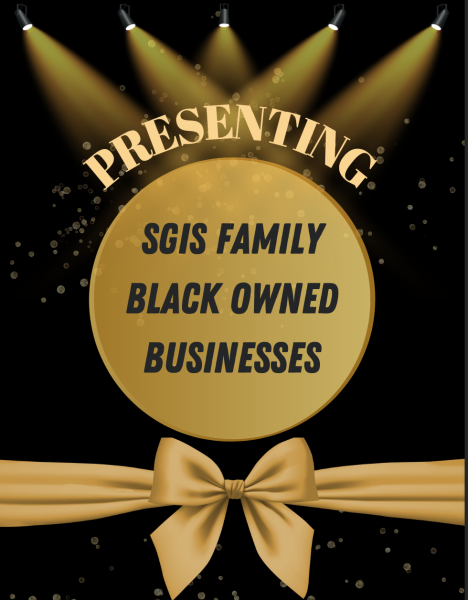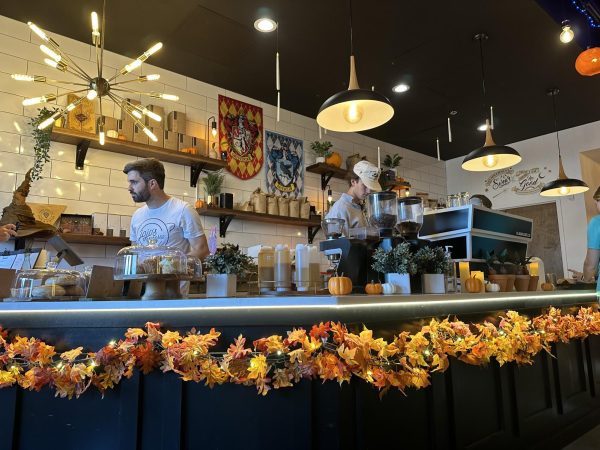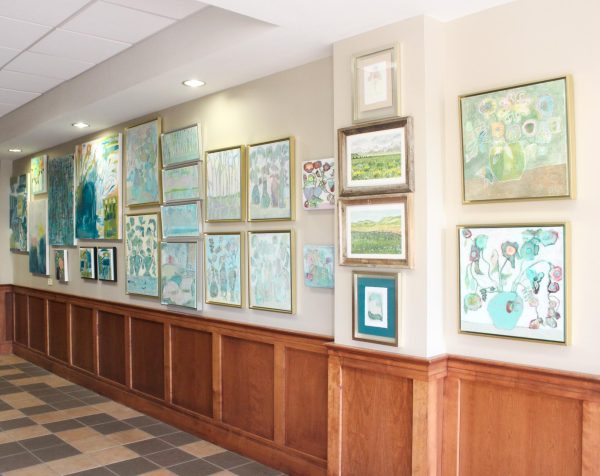Live, Remember and Tell the World
Holocaust child survivor visits St. George’s and tells her story.
“In 1941, as we trudged along the Death March, starving and broken on the freezing roads, my mother, of blessed memory, would say to me over and over, ‘Du must leb, du gedenken, du must dertzeiln der velt vos die Rumanier hobn tzu undz geton – You must live, you must remember, you must tell the world what the Romanians did to us.”
In the above excerpt from holocaust survivor Mrs. Leah Kaufman’s book, “Live! Remember! Tell the World! The Story of a Hidden Child Survivor of Transistria,” she remembers her experiences of being a Romanian Jew during the Holocaust.
Eighty-three years old now, she frequently talks to young Jewish people in Israel, where she currently lives. However, she recently visited St. George’s and spoke with several groups of students as she shared her life story.
Mrs. Kaufman was born as the youngest of seven children in Romania, and she was only nine years old when the Romanian Jews in her community were driven on a death march in 1941 to Transistria, a frigid, barren land between the Dniester and the eastern Moldovan border with Ukraine. Hitler had a plan to make Transisatria a mass graveyard for Romania’s Jews and, within a few months, young Mrs. Kaufman was the only surviving member of her family during the Holocaust.
“For fifty-three years, I didn’t talk about my experience,” Mrs. Kaufman writes in her book. “I didn’t know much about the Holocaust – I knew about my Holocaust. But there are no words to tell what terrible things human beings are capable of doing.”
Now, her story brings her to Memphis, Tennessee for a reason other than solely speaking at St. George’s: she has come to attend her granddaughter’s wedding. They say that the best revenge on Hitler is to have a big family, and Mrs. Kaufman currently has twenty grandchildren, resulting in her being surrounded by family at the wedding.
Though St. George’s students had read several chapters from Mrs. Kaufman’s book before her presentation, the story she told in person was chilling and raw.
Nobody’s Child
Mrs. Kaufman shared that her childhood life before the war was a normal one. She went to school and had Jewish and non-Jewish friends, as well as a loving family. She was a child with a beautiful future but that future would sadly never come. She remembers seeing Russians fleeing the city periodically before the invasion happened, but she did not understand why.
In an interview with the United States Holocaust Memorial Museum in 2000, Mrs. Kaufman recalled that she did not fully understand the political movements that were happenings all around her.
“I had no idea what was going on in the world,” Mrs. Kaufman stated. “I remember [the Romanian Nazi soldiers] coming in with their marching and their tanks, and I was quite frightened.”
Her family was woken up in the middle of the night by a loud banging around the house. Their non-Jewish friends came to warn them of the soldiers and left them with a decision: to leave or to die tomorrow. Her family, along with countless others, fled the city that night as airplanes flew overhead, dropping bombs all around them.
“The worst part was the cries and the screams of those who were not dead, crying for help,” she said in her interview. “People were just running over them, running for their lives.”
Following that horrific night, Mrs. Kaufman’s family was found and cornered by Nazi soldiers in the next town over.
“They lined us all up to be shot,” she said.
In the moments before their deaths, the commander officer ordered his men to stand down, for he recognized Mrs. Kaufman’s mother as a nurse who had saved him many times. Although that brief glimpse of humanity spared her family, this was just the beginning to the nightmare that would ensue.
Soon, her family, along with hundreds of others, was ordered into the marketplace and the Death March began. All she can remember now was the terror she felt because of the whipping, the ordering and the shooting. The soldiers set fire to houses as they walked, and the Jews were forced to walk in between the flaming infernos.
“The Romanians had whips that were rocks and, if you were hit, you were mortally wounded,” Mrs. Kaufman said. “People were falling and if they weren’t dead, then the soldiers would kill them then.”
She recounts that, to this day, she cannot say for certain how long they were driven, but it was miserably cold and bitter nonetheless. At one point, one of the soldiers driving the food carriages asked her, “Little girl, what do you want?”
“I want to live,” she responded.
During her visit to St. George’s, she made it clear that, she still did not fully understand the capacity of what was going on. She had no way of knowing Hitler or what he was ordering be done to Jews.
“I didn’t know what was happening. No one explained to me what was happening,” Mrs. Kaufman. Some time later, they were stopped in another village and Mrs. Kaufman, at only nine years old, conducted her very first tutoring session. There was a Romanian girl who was living in the village and Mrs. Kaufman offered to teach her, marking the beginning of her teaching career.
She continued teaching the girl and, although they separated by a fence, they were temporarily united. She was able to help the other girl understand her school work, and that made Mrs. Kaufman feel alive again. Moments such as these would offer hope and motivation to Mrs. Kaufman when struggling for her survival and humanity.
Soon, new orders came and Mrs. Kaufman, her family and the rest of the Jews were forced to march again. In her book, she remembers this time as a dark one.
“We were driven on and on, and beaten mercilessly. With each bare footstep, we sank further and further into hopelessness and despair. Death seemed like a welcome end to our misery,” she writes. “Nevertheless, somehow I was always looking for a way to survive.”
Once they reached the Dniester River, it was already winter and they had arrived in Transistria. The ground was covered with snow, and frozen bodies lined the streets of the towns, as the ground was too hard and cold to bury the dead. Not long before, Mrs. Kaufman became the only survivor of her family.
“I walked up to my precious mother and kissed her and my sisters goodbye,” she writes. “From that moment and forever afterward, I became nobody’s child.”
She ran away that night and was taken in for a few days by a kind family in another town. It was then that she was informed of the news: the group of Jews she left her hometown with was beaten and burned in the woods by the soldiers. Had she stayed just another night with the Jews, she would have died. Even in death, her mother appeared to be protecting her.
In the spring of 1941, Mrs. Kaufman went to live in an orphanage, but, even there, life was a fighting battle.
“Barely bed or clothed, we were a thoroughly wretched lot,” she writes.
Soon after her arrival, though, she left the orphanage, only to be taken in by another woman named Pani Bukovska who owned a café. She lived there for some time, and she even helped Ms. Bukovska run the café, but she was not safe for long.
When Mrs. Kaufman was found, she was kidnapped by Romanians, her own people, and brought to the train station. She was forced onto a train that was bound to the worst death camp in Transnistria-Pechora. Only three people are known to have escaped and survived from this concentration camp. One lives in Montreal, one lives in the Ukraine, and the third is Mrs. Kaufman herself.
After enduring the wretched camp for several weeks, she seized the opportunity to escape. A tiny girl, she was able to slip past a distracted guard and begin her journey to freedom.
Mrs. Kaufman was constantly on the move after that moment. She wandered from town to town for months, acquiring help from people who would take her in for a night, but she always kept moving. She wanted to rebuild her life and her mind. She made a promise to herself to do just that.
“My family would be forever lost to me, but I did not plan to always remain a victim of the tragedy of my lost childhood,” she writes.
Moving On After Tragedy
She kept that promise and became a successful teacher, got married and had three sons. She did not, however, begin to talk or even think about her past very much. She had worked so hard to put it behind her and build a wonderful life for herself that she remained silent about her past for 53 years.
Despite this, there came a time where she found her voice again and began to share her story with the world, heeding her mother’s order: “Live, remember, and tell the world what the Romanians did.” She published her book in 2005 and has spoken to many groups of the younger generation Jews and other students, in hopes of spreading their history and embedding a spark of hope and determination to create a brighter world.
“You are the continuation of my story because you are the future and the future builders of a better world,” she said to the students of St. George’s.
Mrs. Kaufman’s son, Seth Kaufman, was present after the presentation, and he provided further insight as to why his mother is telling her story.
“There is a lot of evil going on in the world and in this country, kids and adults, we live very sheltered lives, and survivors can bring their own perspectives because they experience a great evil,” said Mr. Kaufman. “My mother wants to tell the world that there is evil, but we need to focus on the positive and not hate people.”
In addition to students in India and at St. George’s being given the opportunity to hear Mrs. Kaufman’s story, her many presentations were filmed as part of a documentary directed by Mr. Rabbi Naftali Schif.
Mr. Schiff is the Executive Director of Aish UK, an organization that was created in 1993 and is devoted to inspiring a sense of passion and commitment to Judaism among young Jews. He is currently filming a documentary about Mrs. Kaufman
“To have people hear her story and hear her commitment to teaching and sharing, and to loving and not hating, is one of the most powerful human experiences,” said Mr. Schiff. “If you can capture it in film, if you can grab the soul of the stories, forever more will people be able to experience them.”
He traveled with Mrs. Kaufman to America in order to film her attending her granddaughter’s wedding, which will serve as the ending to the documentary about her life.
“People impact people,” Mr. Schiff said said, “and these types of people, who have been there and back, who have seen the absolute depravity of man, now understand the heights of when people are committed to doing good.”
When Mrs. Kaufman came to speak at St. George’s, a select group of high school students were able to read a few chapters from her book and were given the opportunity to hear her tell her story. After an hour and a half of listening to her story, students said that they began to understand the gravity of the Holocaust more clearly.
“It was really heartbreaking because you got to not only read what happened,” said freshman Carolyn Lane, “but you could see the emotion on her face and in her voice just how hard it was to talk about it.”
Students made it clear that while reading history in school textbooks is one thing, being able to hear and see a living and breathing survivor of the Holocaust is an entirely different learning experience.
“Just watching her facial expressions and the pauses she took, you could feel her thoughts on the things she was not going to say,” said junior Karina Jensen. “I think opening a box that is not touched very often, and it is hard to talk about, should be brought up more often because it did happen.”
It is because of people like Mrs. Kaufman that we can learn the true depths of humanity, honoring the triumphs and learning from the failures, as well as how to love each other.
“It was hard to fathom that she actually was there,” said junior Allie Harbert, “but she really stressed how much she wanted us to keep the legacy going and to respect those who went through it.”
For several students, Mrs. Kaufman’s bravery and fearlessness during the Holocaust and in the years after puts their own lives into perspective.
“At first, it just felt like a nightmare. I personally felt like I had everything in the world compared to her childhood,” said eighth grader Justin Bray. “It was really eye opening to realize how tough other people have it or have had it.”
While the Holocaust was a hair-raising event in history we would like to forget, it is a part of our human history; after all, it is our own history that shapes us into the people we are today.
“When you read about an event or person, it is easy just to see the words on the page and not feel the actual emotional impact,” said eighth grader Maria Sallee. “What Mrs. Kaufman went through and survived was absolutely horrific.”
There are people today who deny that the Holocaust ever happened, claiming that it was all just a ruse, that there was no possible way something so horrific could have ever occurred. This is why we need survivor stories. Mrs. Kaufman’s story, along with millions of other testimonies, serve as evidence stating otherwise.
However, Mrs. Kaufman does not have disdain or hatred for those who did this to her. In fact, she refuses to hate anyone. Instead, she encourages everyone, especially young people, to love others and to never take anything for granted.
“I, who am a living spark from the inferno of the Shoah [Holocaust], am here to tell you today that we must never give in to the pit of despair,” said Mrs. Kaufman in her book. “Despair leads to apathy, to indifference, and to inaction, and these are worse than death.”












Sarah Cowan • Jan 17, 2015 at 4:17 PM
Juliana, what a beautiful piece of writing you have created, one that shares thoroughly and with great sensitivity a topic that we all must continue to learn about and engage with. I am impressed with your engagement with the book, our students, Mrs. Kaufman, her son, and the Rabbi – all as a means to extend this learning opportunity to the greater SGIS community. Thank you for your writing.